Introduction
The Airbus A320 is a special product for Aerosoft. In fact,
Airbus X was Aerosoft’s first in house big aircraft project and
now they present the Airbus X Extended.
With this latest release, Aerosoft aims to give virtual pilots a
realistic experience from the captain’s seat without trying to
simulate the check ride simulator. So Aerosoft wants to give us
the systems a pilot uses in day to day operations, not the
systems that are practically never used.
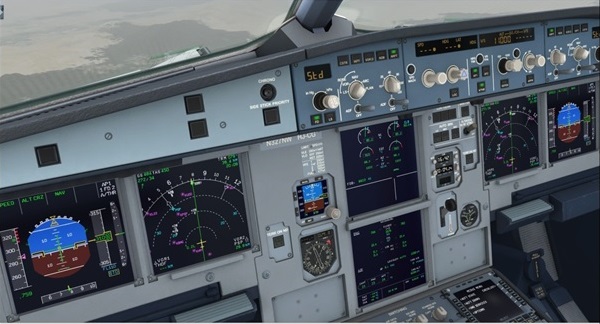 This is what the package is all about |
The Airbus A320 is a short / medium haul, 150 seat, twin engine, narrow body airliner that is in direct competition with Boeing’s 737 series. It is the most successful of Airbus' aircraft with over 5,600 delivered and 4,100 on order. It is arguably the most important aircraft for Airbus because, by sheer volume, it generated the cash flow for other projects such as the A330, A340 and A380. It also introduced the technology that is standard on all Airbus aircraft.
When the Airbus A320 was introduced in 1987 it was a revolutionary airliner as it was the first airliner with a fly-by-wire flight control system. All control inputs are controlled by computer and then sent to the control surfaces by electronic signals. The aircraft also has an automatic trim and FADEC (Full Authority Digital Engine Control). FADEC is a digital control system that performs complete engine management.
This computer control made it possible to use an inbuilt flight envelope protection system which makes it virtually impossible to go outside the limits of the aircraft. All these systems that make the A320 so revolutionary are also the reason why it proved to be so difficult to develop a good version for FSX.
So let’s find out how this version checks out.
Download and Installation
The Airbus X Extended is available in boxed and download form. For this review, I used the download version from the Aerosoft site. As usual, with products bought at the site, download and installation gave no problems. Product activation is instantaneous after entering your email address and activation code and soon after downloading the 890MB product it was ready for use.
What You Get
The package includes models for the A320 and the A321, with CFM and IAE engines and with and without sharklets. Also included is the A320 Neo demonstrator. For all versions, there is an ample supply of liveries from all parts of the world.
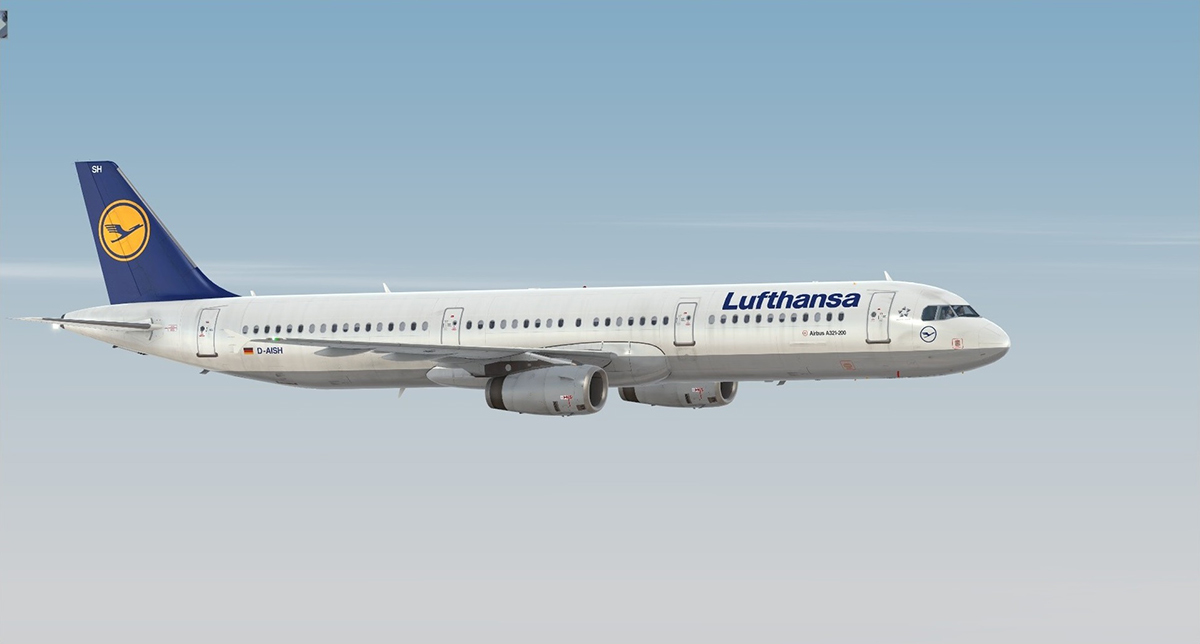 A321 IAE |
 A320 CFM |
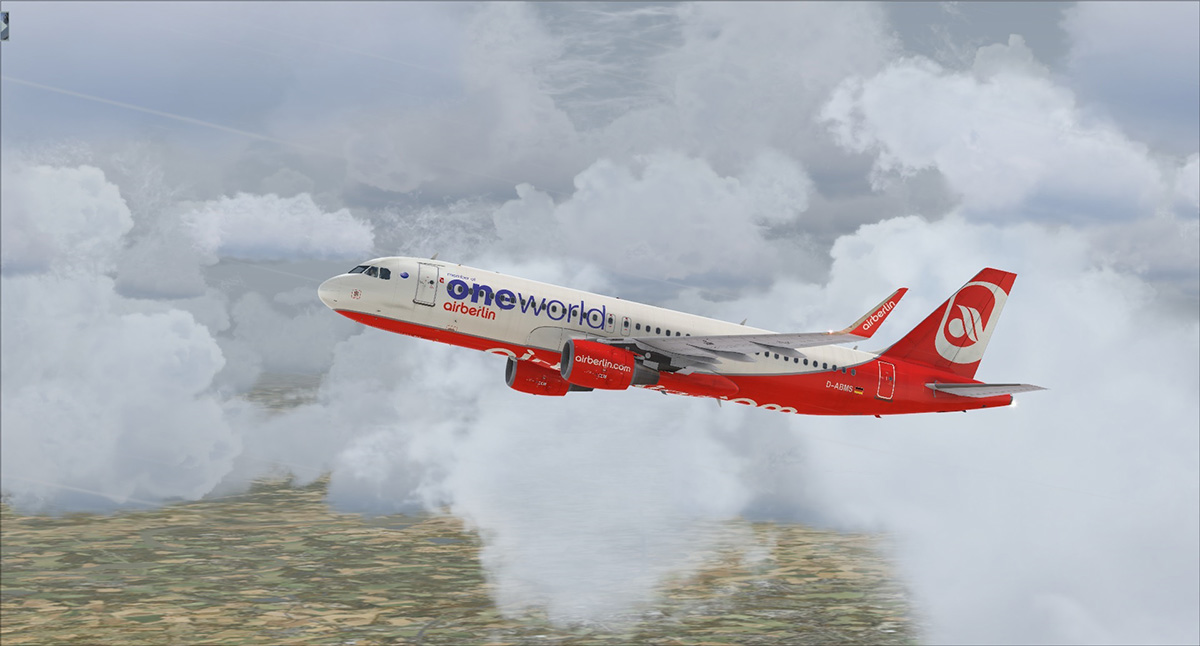 Sharklets |
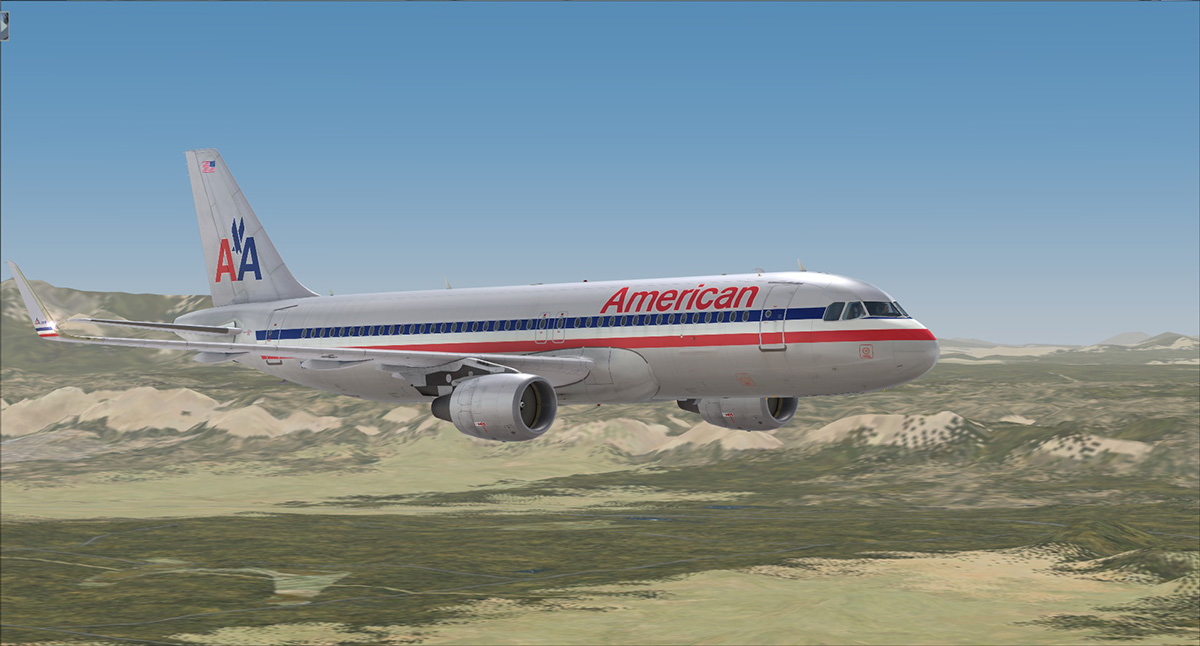 US carriers are present |
Aerosoft did not hold back on extras with this product. Included in the package are a range of useful tools, such as: the Runway Awareness and Advisory System (RAAS), a flight data recorder, a fuel planner, and a company route editor. Last but not least, Aerosoft also includes a web server in order to be able to use the MCDU via web browsers, i.e. on tablets.
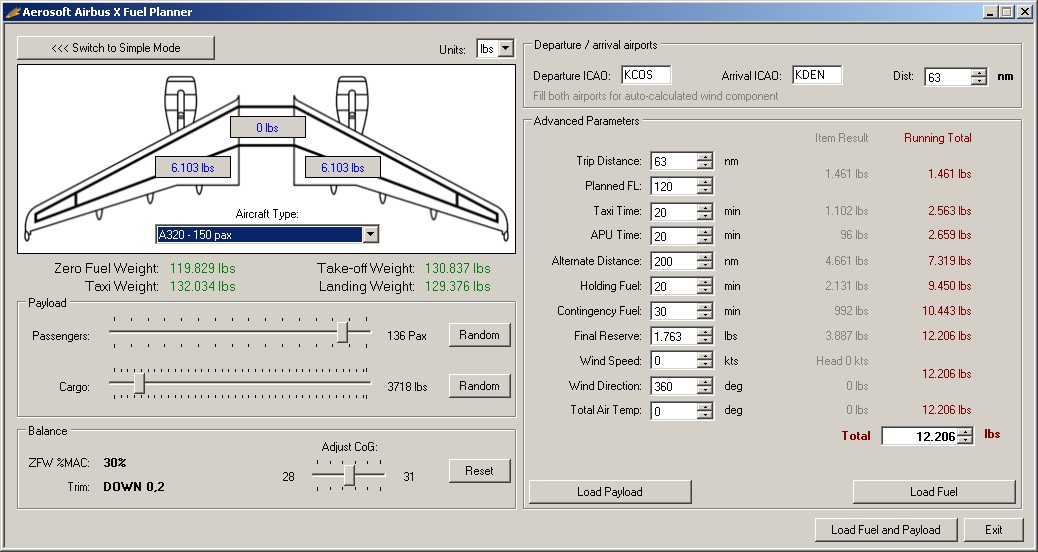 The fuel planner |
The external model is good without being top of the line. Don’t get me wrong, the model is spot on and the liveries are beautiful and life like, but compared with some of the competition, there are less external animations, no HD textures and no wing-flex. Consequently, when you zoom in extremely close, you will get pixilation, you won’t be able to count rivets, you won’t get the minimal wing-flex present in the real world aircraft and you won’t be able to take a look at the radar dish in the nose of the aircraft.
The upside is that this appears to be a deliberate strategy from Aerosoft. They have a lot of complex scenery on the market and they want the aircraft to perform adequately.
I do have respect for this decision. It is never fun to see frame rates drop to extremely low levels during approach and if limiting non-essential complexity helps to overcome this problem, I am all for it. All this is not to say that external animations are completely forgotten. Adhering to the model strategy of including what is important to the pilot in the left seat, then the important animations from the flight crew’s perspective are present. All doors, external power, and safety cones are all present, as are the normal animations for control surfaces and landing gear. To add to this, everything that is present is beautifully modelled.
.jpg) The model is at home at big airports like Frankfurt |
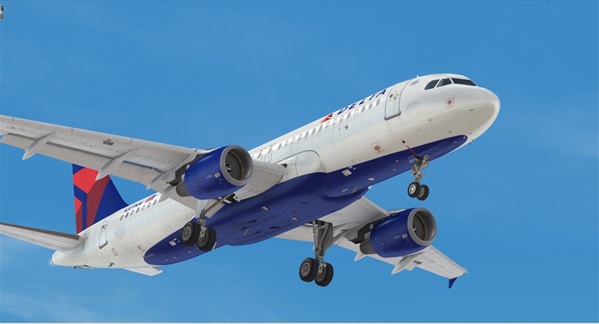 In the Air |
 Good but not HD textures |
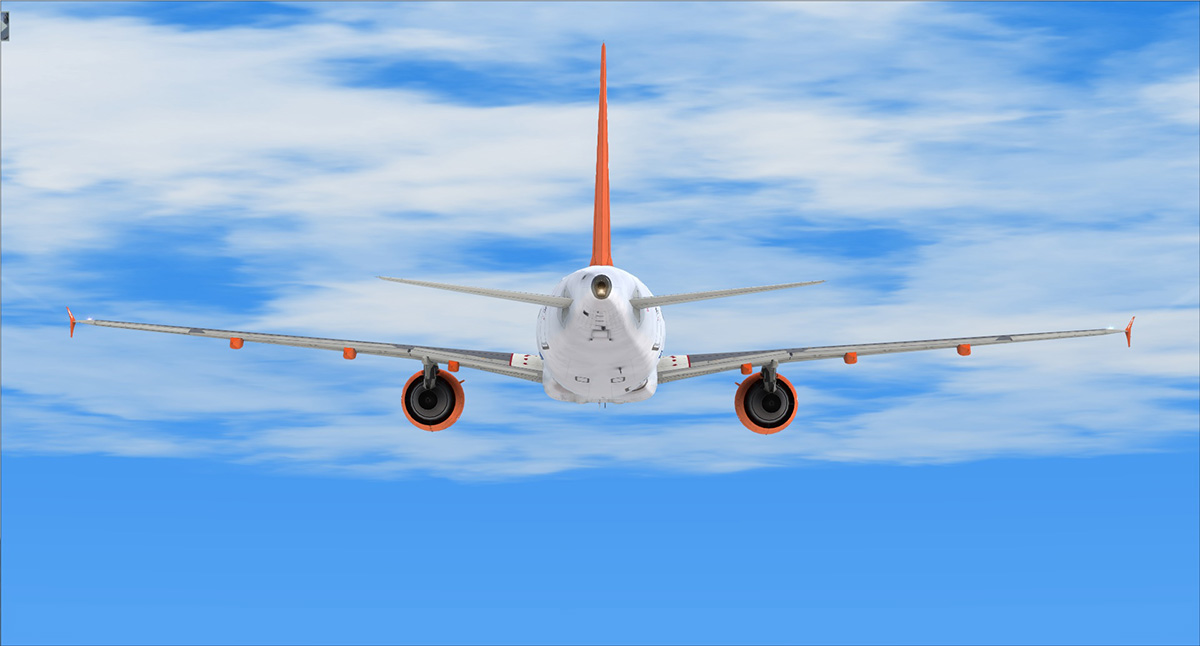 You won’t miss wing flex unless you really, really want to |
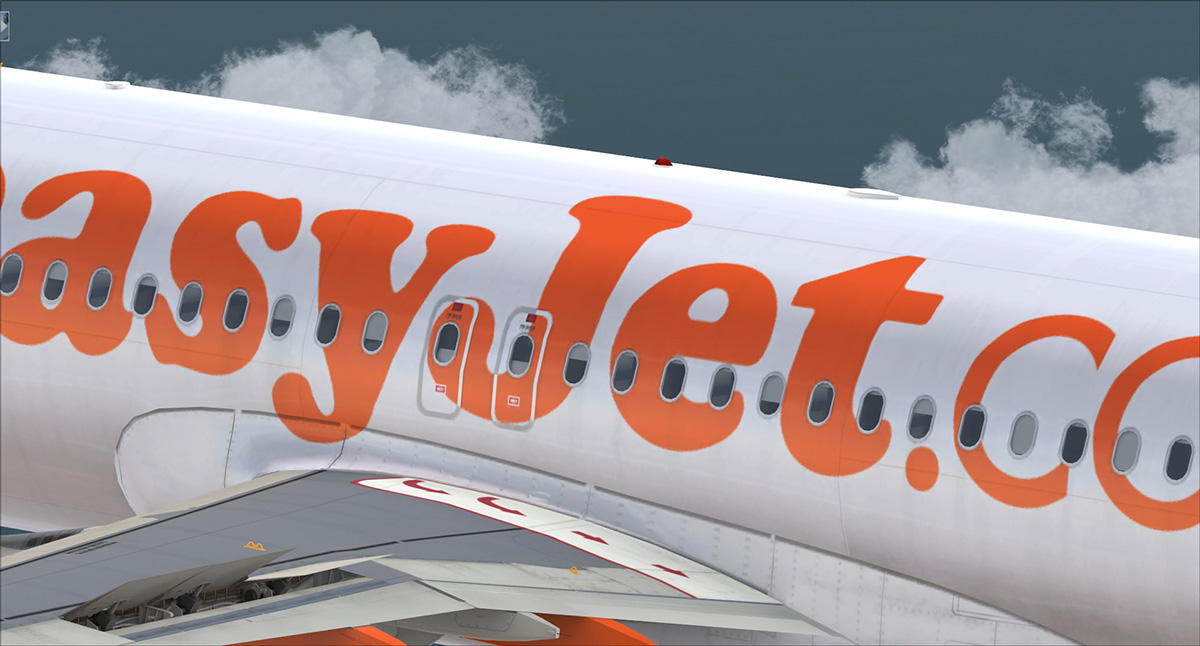 Attention to detail is apparent |
|
What is true for the external model is true for the internal model. The virtual cockpit is beautifully done but it is not absolute top quality. You won’t be able to read all the decals on the windscreens and non essentials, such as coffee cups and holders, are not present. Also not present is a cabin view. All switches and knobs that you need as the Pilot In Command, however, are present and they are the correct shape and size and textures are good, without setting new standards.
Internal animations also follow the overall model strategy. This means that things you would actually use as the pilot, such as shades or the table in front of you, are animated, but things such as an opening cockpit door are not. The most important animations, knobs, switches, gauges and screens are incredibly smooth. Once again, I see the rationale behind not including everything and I applaud the effort and the rationale in thought process of deciding what to include and what to leave out is evident.
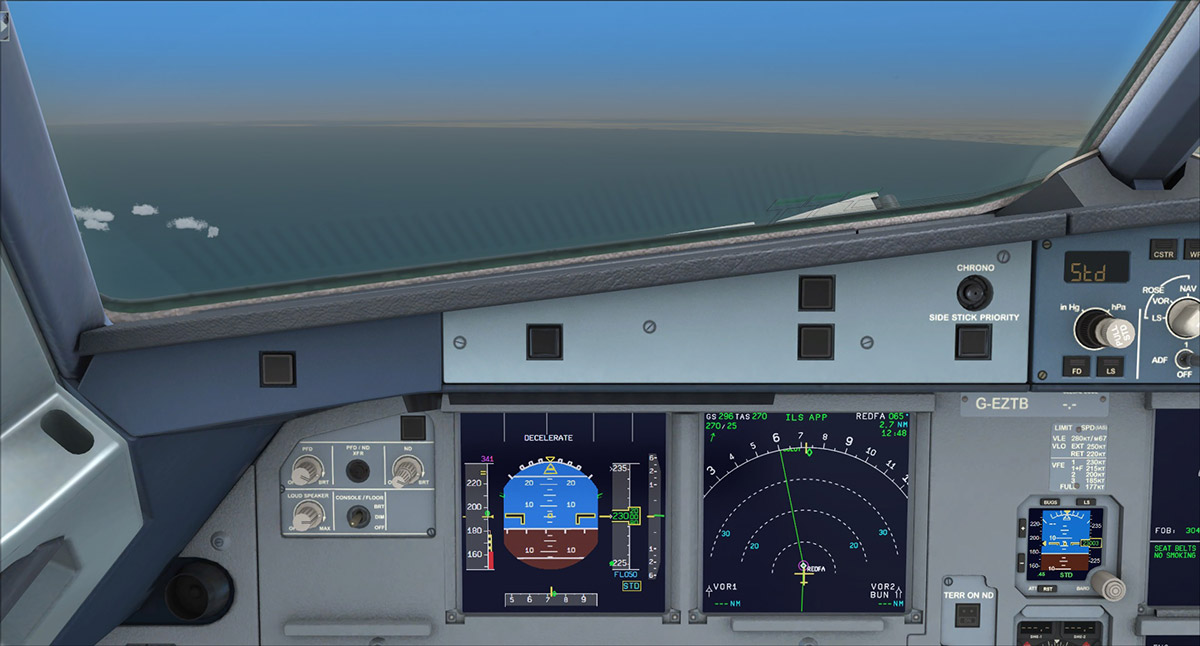 View from the captain’s seat |
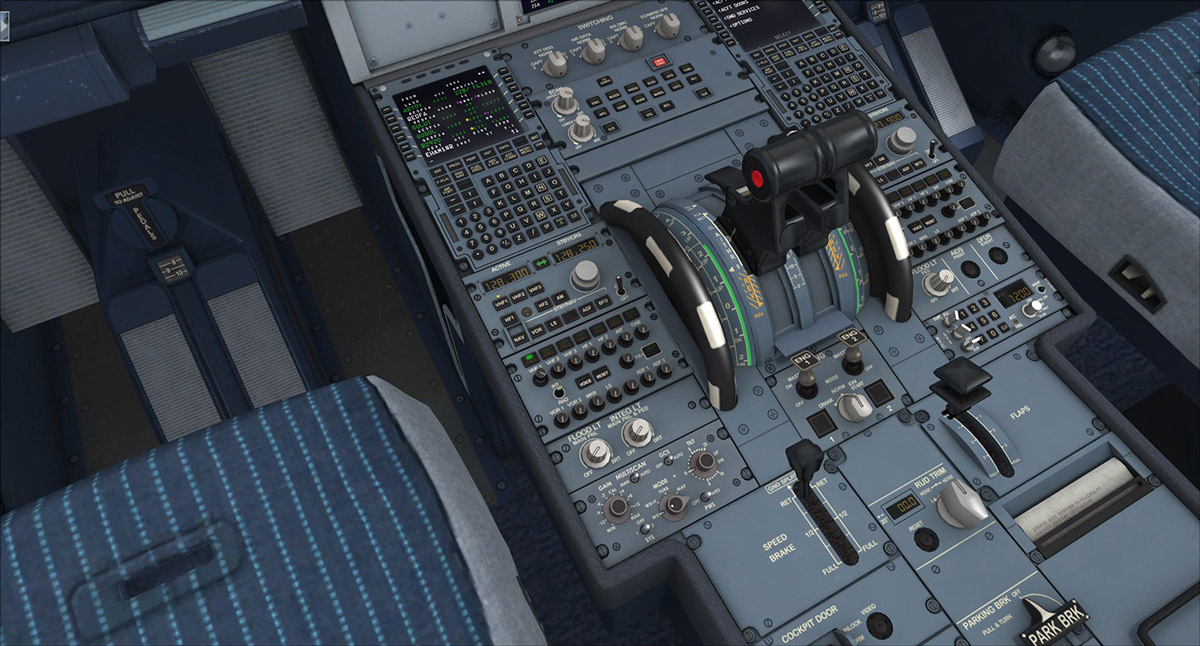 Pedestal View |
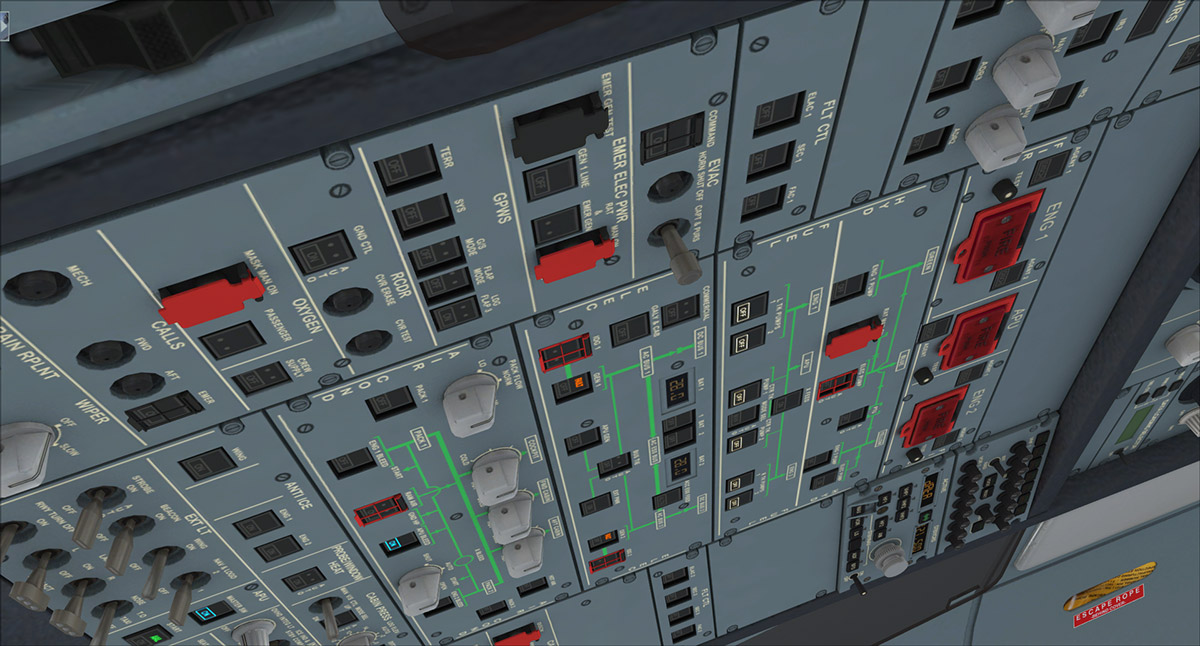 Overhead Panel |
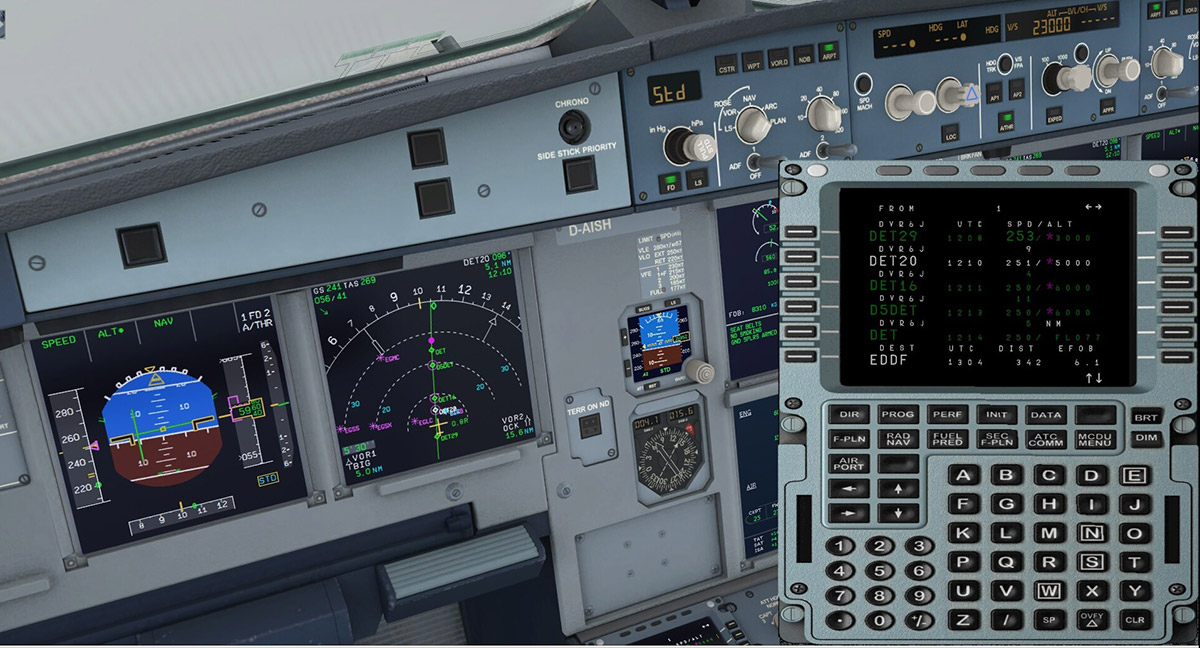 The only 2D pop-up |
The aircraft does have a 2D panel option but I haven’t found a real use for it. The virtual cockpit does have lots of views and with the presence of a 'panel bar' and a 'wing view bar', managing views is a breeze. These 'view bars' are, like all options, controlled from the right MCDU. The only instrument that has a 2D pop-up is the left MCDU.
Systems Fidelity
With regard to systems fidelity, Aerosoft made it clear they had no intention to deliver all the systems. They wanted to deliver the systems the pilot uses in the day to day routine of flying, not the systems only ever used in the simulator check rides. So there is no fault module and no working emergency systems such as the RAT.
Now that we have determined what is part of the package, we can assess the quality of the delivered systems. I followed Mike Ray’s, PC Simmer’s guide to flying Airbus sims. It left me with the impression all systems in normal use are indeed simulated. I could follow the instructions and the aircraft would behave as I expected. The MCDU, autopilot and FADEC all did their part. Add to that the RAAS and the interactive checklists on the right MCDU and you have quite an impressive package. There is also the option to fly with a co-pilot, so feature wise, there is not a whole lot to wish for.
Using all these beautiful features, in practice, did give some issues however.
There is an issue with the autopilot in that it overshoots waypoints and then makes a sharp turn to compensate for it. It is not very comfortable for the virtual passengers and the real world aircraft does not behave this way. Another limitation is the CFM engine is the only engine simulated in the systems. The aircraft models with the IAE engines have no different MCDU presentation and no appreciable difference in flying characteristics. The same is true of the aircraft models with sharklets. There is no measureable difference in fuel burn compared with their non sharklet variants.
The last omission I need to mention is the systems in the Airbus X Extended always use the metric system but you can use lbs in the fuel planner. When I use an American Airlines variant and fill it with fuel using the fuel planner in lbs mode the block fuel I have to enter in the MCDU is obviously wrong. However, the MCDU not only accepts the value that is much too high, but it actually makes no difference what value is entered as the calculations are not influenced at all. Obviously, this is not as it should be.
 Why is it doing that? Most often heard when an automation dependent crew can’t understand what’s going on. |
 What is it doing now? Another often heard sentence aboard an Airbus when a crew is in trouble. |
The sounds of the Airbus X Extended are great. All the cockpit sounds are as expected and added nice touches to the overall experience of flying the aircraft. The engines also sound as they should and I thoroughly enjoy the immersion offered by this sound package.
Flight Characteristics
Accepting the limitations, the aircraft behaves as expected of a CFM engined, no-sharklets, Airbus A320. It performs close to the performance figures I was able to source from real world data available on the internet and in my personal library. Speed, range, ceiling, and fuel use all seem to be within acceptable margins of the expected values. With regard to take-off and landing settings, there is a noticeable difference between the Airbus X Extended values and the values TOPCAT provides. Which are the correct values is impossible to say without access to actual real world Airbus A320 performance tables, so I simply make the observation.
Flight Dynamics
I was very pleased and impressed with the flight dynamics of the Airbus X Extended. This is the first time in flight simulation I did not mind being a 'bus driver'. The aircraft has its irks, but I really do feel Aerosoft have nail the flight dynamics in the Airbus X Extended.
The aircraft flies like I expect an Airbus A320 to fly. The auto trim and FADEC functions work and the plane is 'as steady as a rock' when flown manually. When you disengage the FADEC and autopilot, the aircraft is a joy to fly and behaves in the manner you would expect of an aircraft of this size. Whether you fly fully automated or completely manually, the Airbus X Extended delivers the goods.
 The autopilot does take some liberties about following the flight plan |
Documentation
The eight volumes of information provided in the documentation by Aerosoft is extensive:
• Volume 1 - the aircraft in FSX;
• Volume 2 - normal procedures;
• Volume 3 - procedures;
• Volume 4 - systems;
• Volume 5 - checklists;
• Volume 6 - step by step tutorial flight;
• Volume 7 - quick data sheet; and
• Volume 8 - throttle setup guide.
Everything is clearly written and very informative and there is a lot to read and learn if you so desire. I do not particularly like the layout of the tutorial flight, but I do like the information provided by it. The information provided by Aerosoft is enough to learn how to fly Airbus X Extended. It does not describe every system of the real world aircraft, nor does it describe every detail of its operation.
Value for Money
I have no reservations in saying Airbus X Extended is worth every penny or (euro) cent you pay for it. When you take into account the limitations, Airbus X Extended is a simulation of the day to day operations from the left hand seat on a CFM powered, non sharklet, Airbus A320/A321, and for this, the package is awesome. There is so much to like that the few issues with the automated systems are easily forgiven.
Pros:
• Well thought out package.
• What you basically need is there.
• Performance is good.
• A lot of great extra features.
• Following normal procedures, the aircraft performs and flies as expected.
• A very good sound set.
• Extensive documentation without overwhelming the more casual flight simmer.
• Good integration with external nav data sources.
Cons:
• Autopilot overflies waypoints and then over compensates by turning hard.
• Some incomplete features, such as the inability to use lbs or fields that should make a difference in flight planning that don’t, e.g.
'Block Fuel'.
| Verdict: |
 |
|
| • External model: | 8/10 | |
| • Internal model: | 8/10 | |
| • Sounds: | 9/10 | |
| • Flight characteristics (does it fly by the numbers): | 8/10 | |
| • Flight dynamics (does it feel like what it looks like): | 10/10 | |
| • Documentation: | 9/10 | |
| • Value for money | 10/10 |
| Mutley’s Hangar score of 8.9/10, "Highly Recommended" and a Mutley's Hangar Silver Award. |
Kasper Hanselman
Review machine Spec: Intel i5 2.67Ghz
| 6Gb DDR3 Ram |Radeon HD5670|Windows 7 64bit
|
|
